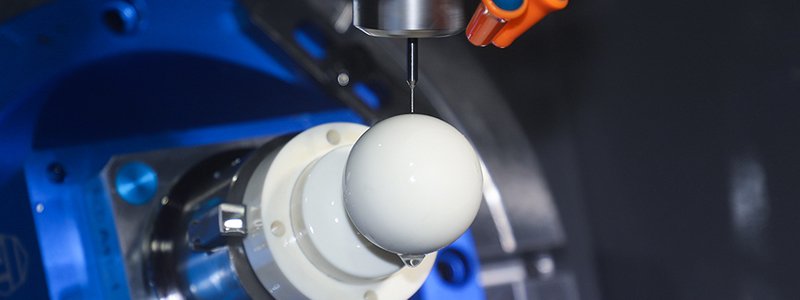When working with advanced ceramics, the choice of manufacturing method can determine whether a part meets its performance requirements—or fails in service. Two common methods are ceramic machining and laser cutting. While both are widely used in industrial applications, they differ greatly in precision, surface quality, cost, and suitability for complex designs.
This guide compares the two processes to help you choose the right one for your precision parts.
What Is Ceramic Machining?
Ceramic machining refers to subtractive manufacturing techniques such as CNC milling, grinding, and drilling, specifically adapted for hard and brittle materials like Macor, alumina, zirconia, aluminum nitride, silicon carbide, quartz, and Zerodur.

Using advanced multi-axis CNC machines, this process can achieve:
Tolerances as tight as ±0.002 mm
Surface finishes down to Ra 0.01 μm
Intricate 3D geometries and internal features
Micro-hole drilling down to 0.1 mm with ±0.01 mm accuracy
Because ceramics are prone to cracking under thermal or mechanical stress, machining relies on diamond tooling, precise feed rates, and careful process control to maintain structural integrity.
What Is Laser Cutting?
Laser cutting uses a focused beam of light—commonly CO₂ or fiber lasers—to melt or vaporize material along a programmed path. It’s widely used for metals, polymers, and some ceramics.

Laser cutting offers:
Fast cutting speeds for thin sections
High flexibility for 2D profiles
No physical contact with the workpiece
Easy integration with CAD/CAM systems
However, ceramics present a unique challenge: their low thermal conductivity and brittleness make them susceptible to thermal shock, which can cause edge micro-cracks or chipping.
Side-by-Side Comparison
| Feature | Ceramic Machining | Laser Cutting |
| Precision | ±0.002 mm achievable | ±0.05–0.1 mm typical |
| Surface Finish | Ra 0.01 μm possible | May require post-processing |
| Material Compatibility | Excellent for all technical ceramics | Limited; some ceramics prone to cracking |
| Shape Complexity | Full 3D and multi-axis features | Best for flat 2D profiles |
| Heat-Affected Zone | None | Present—can alter material properties |
| Production Speed | Slower per piece | Faster for thin sheets |
| Best Use Case | Ultra-precise, complex, high-performance parts | High-volume, simple-profile cutting |
Advantages and Limitations
Ceramic Machining
Advantages
Extremely tight tolerances for high-performance applications
Works with the hardest ceramics without compromising material properties
Supports both prototype and production runs
Limitations
Slower cycle times than laser cutting
Higher per-unit cost for large, simple shapes
Laser Cutting
Advantages
Very fast for flat patterns and thin sheets
No tooling costs—ideal for rapid design changes
Clean edges on compatible materials
Limitations
Thermal effects can cause micro-cracks
Limited to 2D or simple contours
Lower achievable precision compared to CNC machining
Which Is Better for Precision Parts?
If your project demands:
Ultra-tight tolerances
Complex 3D geometries
Structural or optical integrity of high-performance ceramics
…then ceramic machining is the superior choice.
If you need:
Fast cutting of thin sheets
Moderate precision
Cost efficiency for large quantities
…then laser cutting may be more practical—provided the ceramic can withstand thermal stress.
Final Recommendation
For industries such as aerospace, semiconductors, optics, and medical devices, where failure is not an option, precision ceramic machining remains unmatched. Laser cutting is best reserved for simpler geometries or non-critical components where speed is the main priority.
Need help deciding?
At Jundro Ceramic Technology, we specialize in 5-axis precision ceramic machining for Macor, AlN, SiC, quartz, and other technical ceramics. Our tolerances reach ±0.002 mm, ensuring every part meets the most demanding specifications.
📩 Contact us today to discuss your project requirements and get a tailored recommendation.
